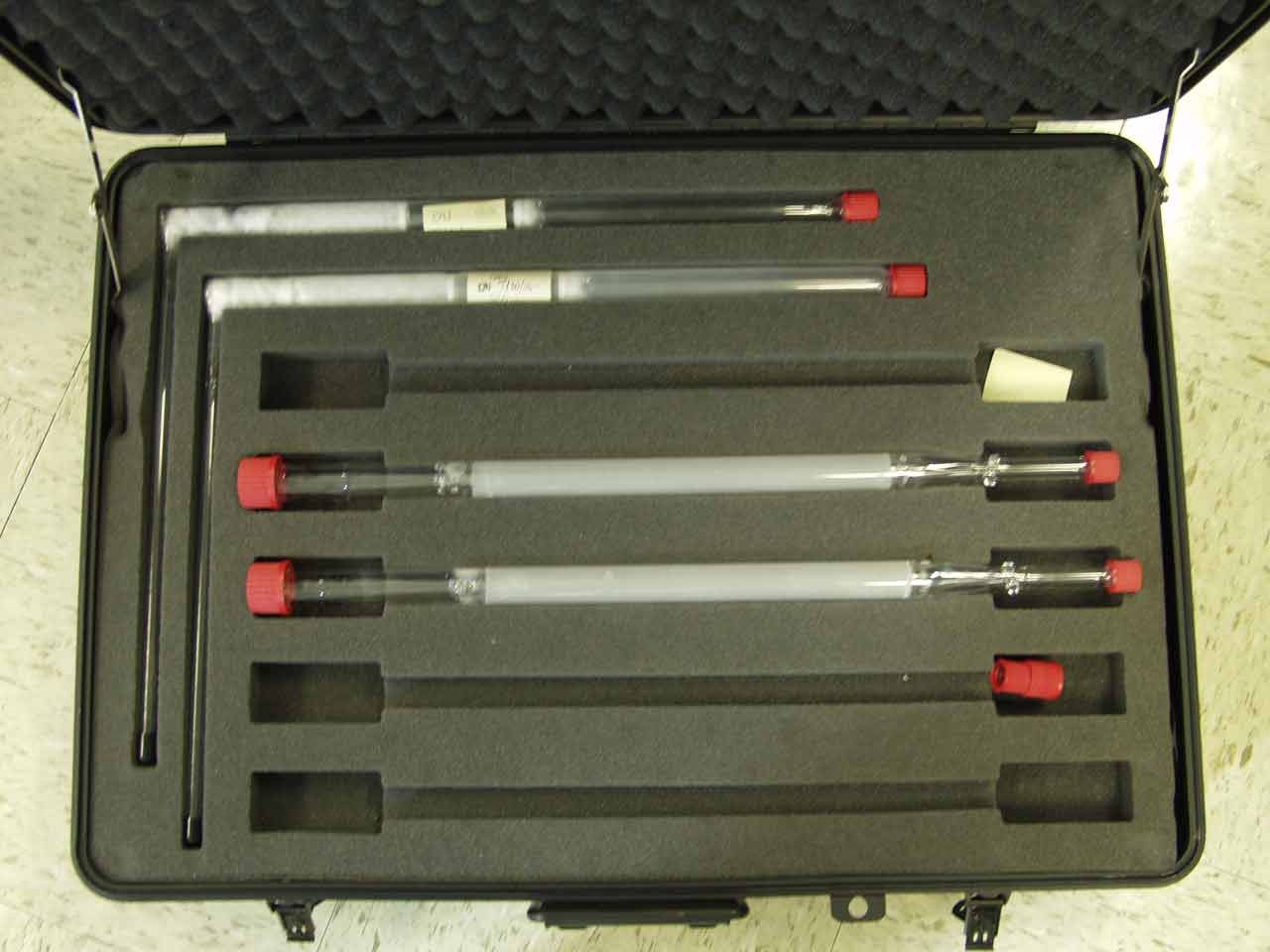Difference between revisions of "Template:Article of the week"
Shawndouglas (talk | contribs) (Updated article of the week text.) |
Shawndouglas (talk | contribs) (Updated article of the week text.) |
||
| Line 1: | Line 1: | ||
<div style="float: left; margin: 0.5em 0.9em 0.4em 0em;">[[File: | <div style="float: left; margin: 0.5em 0.9em 0.4em 0em;">[[File:Denuders.jpg|200px]]</div> | ||
'''[[ | A '''[[denuder]]''' is a cylindrical or annular conduit or tube internally coated with a reagent that selectively reacts with a stable flow of gas drawn through the conduit. The gas molecules diffuse to the walls while the [[analyte]] contained in the gas is transmitted outwards via laminar flow, collected, and analyzed. Effectiveness of the system depends primarily "on a complete discrimination between the gas species and particulate matter." | ||
Additional non-linear denuder geometries have also been tried with mixed results. Coiled configurations increased collection efficiency but lost larger particulate. A parallel multi-tube diffusion denuder has also been tried and found to increase collection efficiency. Other geometries include honeycombed, annular, and parallel plate. The development of the annular denuder in particular allowed researchers to overcome the inefficiencies of cylindrical denuders, allowing operation at larger flow rates (up to 30 times that of cylindrical denuders), shorter sampling periods, and less particle loss. ('''[[Denuder|Full article...]]''')<br /> | |||
<br /> | <br /> | ||
''Recently featured'': [[National Institute for Occupational Safety and Health]], [[Ambulatory surgery | ''Recently featured'': [[Infectious disease informatics]], [[National Institute for Occupational Safety and Health]], [[Ambulatory surgery center]] | ||
Revision as of 17:27, 19 November 2014
A denuder is a cylindrical or annular conduit or tube internally coated with a reagent that selectively reacts with a stable flow of gas drawn through the conduit. The gas molecules diffuse to the walls while the analyte contained in the gas is transmitted outwards via laminar flow, collected, and analyzed. Effectiveness of the system depends primarily "on a complete discrimination between the gas species and particulate matter."
Additional non-linear denuder geometries have also been tried with mixed results. Coiled configurations increased collection efficiency but lost larger particulate. A parallel multi-tube diffusion denuder has also been tried and found to increase collection efficiency. Other geometries include honeycombed, annular, and parallel plate. The development of the annular denuder in particular allowed researchers to overcome the inefficiencies of cylindrical denuders, allowing operation at larger flow rates (up to 30 times that of cylindrical denuders), shorter sampling periods, and less particle loss. (Full article...)
Recently featured: Infectious disease informatics, National Institute for Occupational Safety and Health, Ambulatory surgery center










